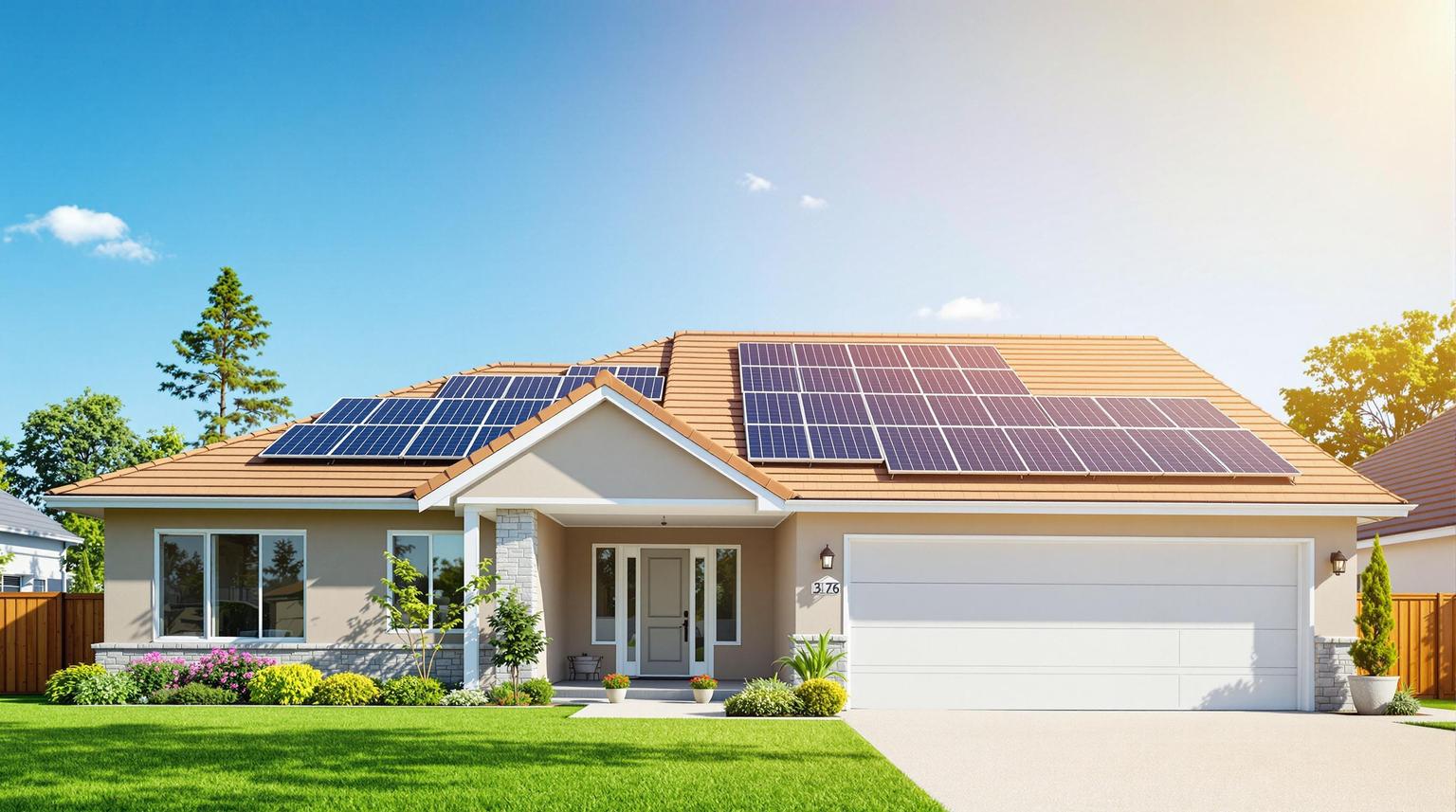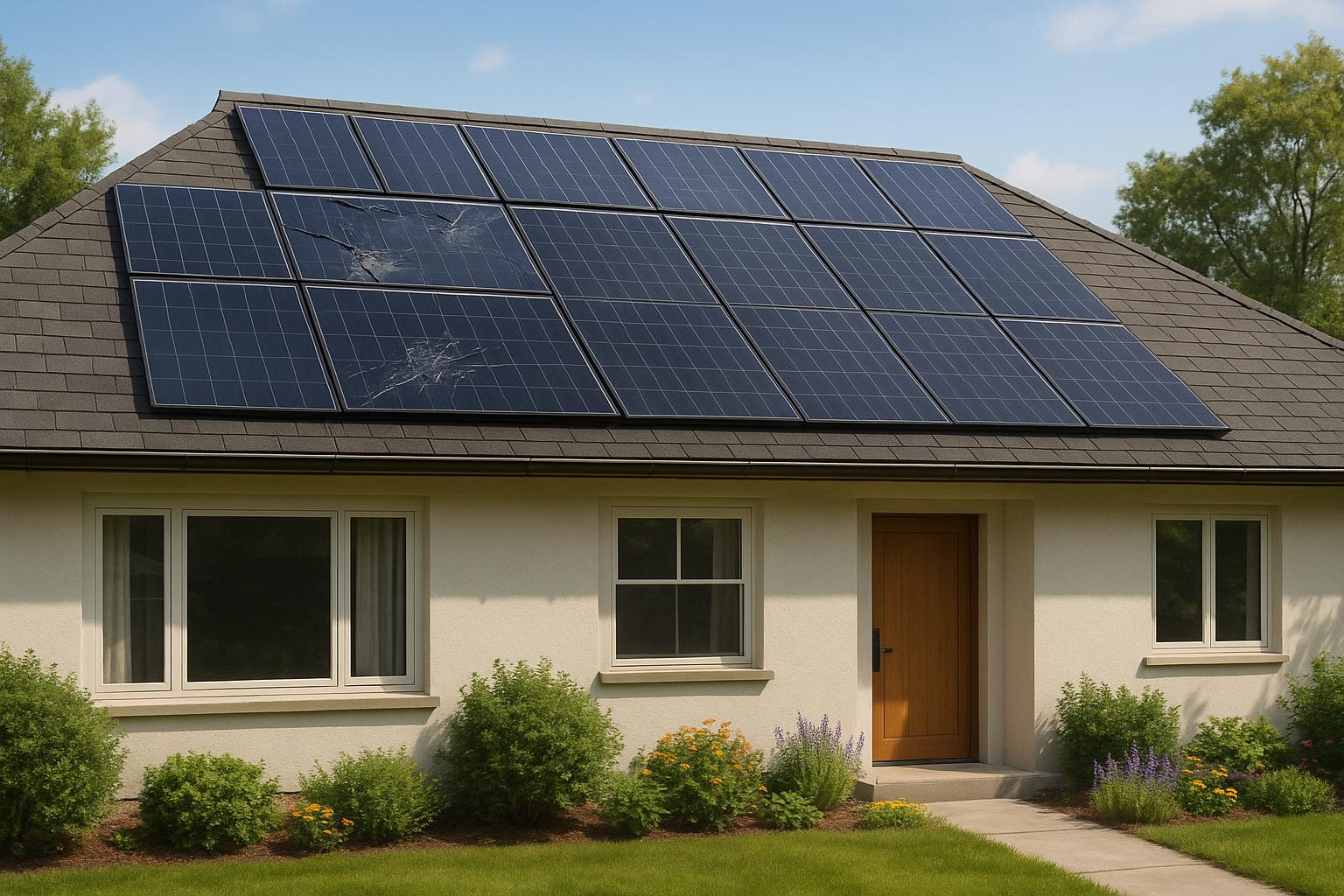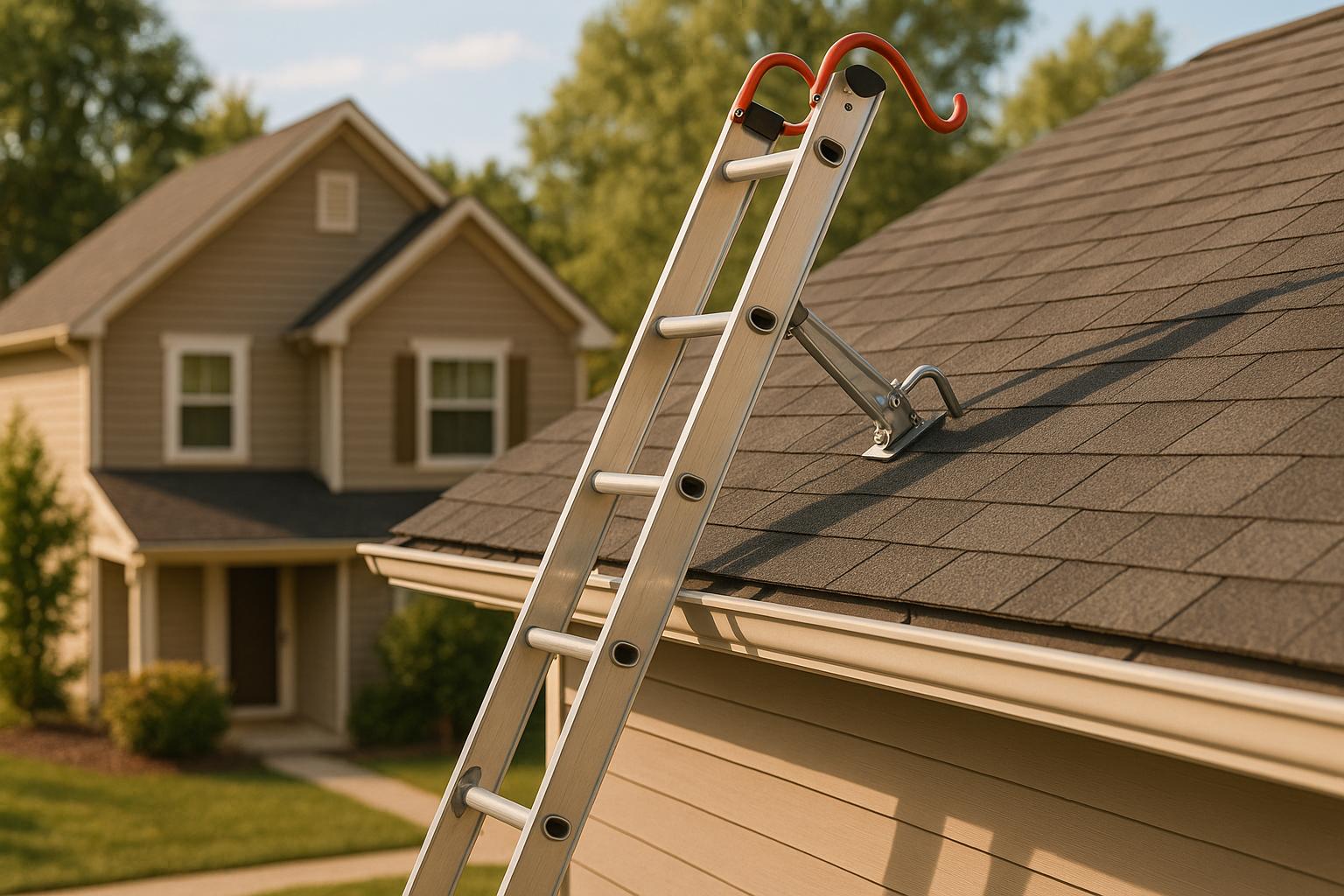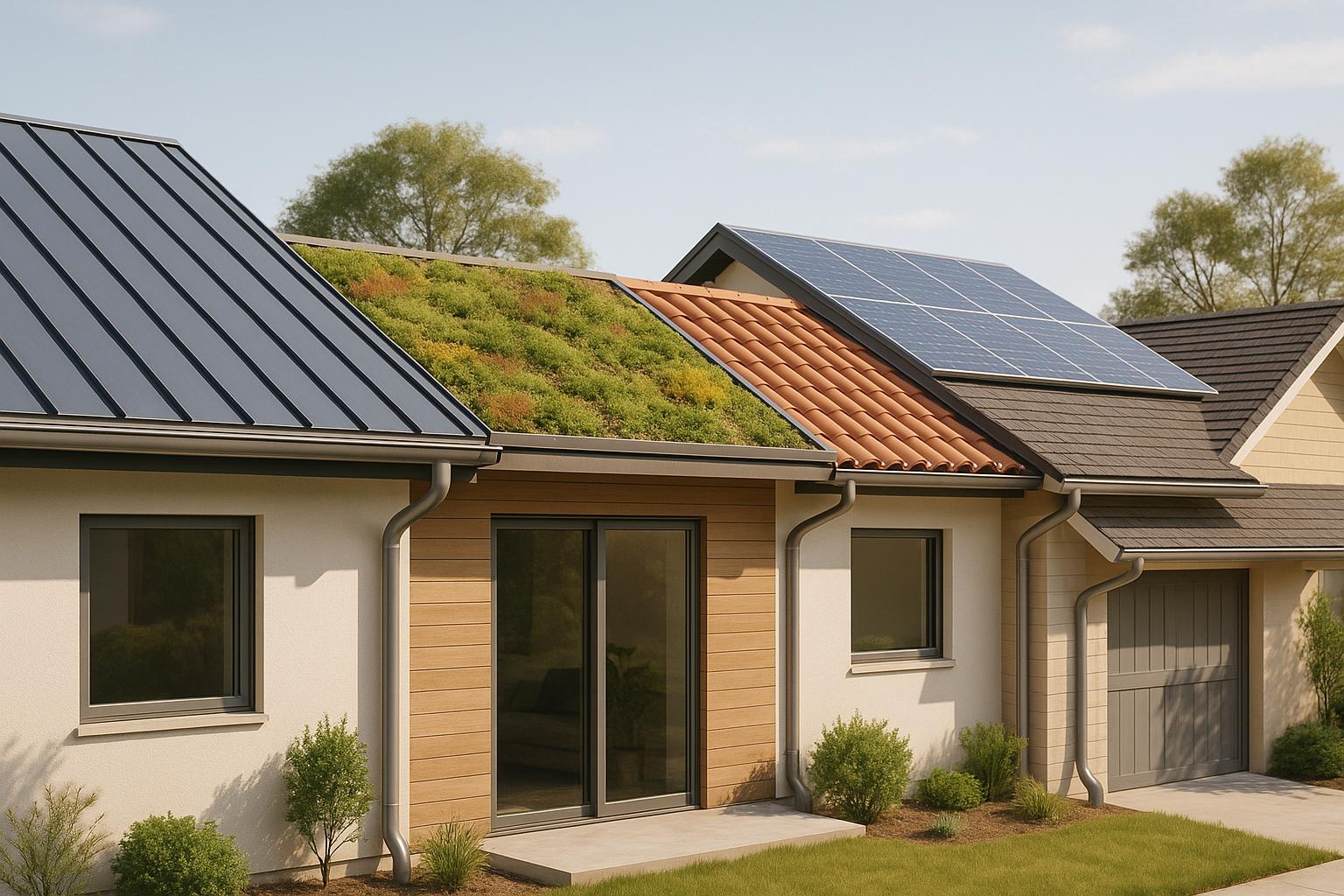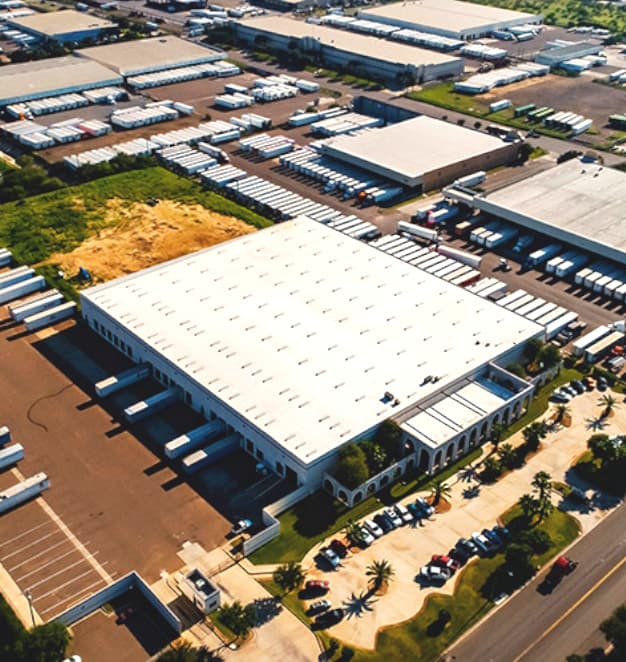Yes, replacing your roof before installing solar panels is often necessary. Here’s why:
- Roof Lifespan Matters: Solar panels last 25–30 years. If your roof is aging or has less than 10–15 years left, replacing it first avoids future costs of removing and reinstalling panels.
- Structural Integrity: Your roof must support the weight of solar panels. Issues like leaks, sagging, or damaged shingles can lead to safety risks and inefficiency.
- Cost Savings: Combining roof replacement with solar installation saves $4,000–$10,000 by reducing labor and avoiding panel removal later.
- Professional Inspection: A roof inspection ensures your roof is ready for solar, maximizing energy production and protecting your investment.
Quick Overview
- Replace Now: Ideal if your roof is aging or damaged. Saves money long-term.
- Replace Later: Adds removal/reinstallation costs ($200–$300/panel).
| Scenario | Roof Cost | Solar Cost | Panel Removal/Reinstall | Total Cost | Potential Savings |
|---|---|---|---|---|---|
| Replace Before Solar | $10,000 | $19,000 | $0 | ~$25,000 | ~$4,000 |
| Replace After Solar | $10,000 | $19,000 | ~$3,200–$7,200 | ~$32,200–$36,200 | $0 |
Bottom Line: If your roof is older or in poor condition, replacing it before going solar ensures safety, saves money, and aligns both systems’ lifespans.
How Much To Remove Solar Panels To Replace Roof? The Real Cost
When to Replace Your Roof Before Solar Installation
Deciding whether to replace your roof before installing solar panels boils down to three main factors: age, material type, and current condition. Making the right choice here can save you from future headaches and expenses. Let’s break it down by examining your roof’s age, materials, and overall state.
Checking Roof Age and Material Life Expectancy
The age of your roof is a critical factor in determining whether it needs replacement before adding solar panels. If your roof is over 10 years old, it’s wise to have it inspected or even replaced before installation. Why? Solar systems typically last 25–30 years, so having a roof that can match that lifespan avoids costly panel removal and reinstallation later.
The material of your roof also plays a big role. Different materials have varying lifespans and levels of compatibility with solar panels. Here’s a quick look:
| Roof Material | Lifespan | Solar Compatibility | Installation Considerations |
|---|---|---|---|
| Asphalt Shingles | 12–30 years | Excellent | Durable and generally easy for solar setups |
| Metal | 40–80 years | Outstanding | Highly durable, perfect for solar panels |
| Tile | 100+ years | Good | Requires specialized mounting techniques |
| Tar and Gravel | 20–30 years | Fair | Needs careful planning for flat roofs |
If your asphalt shingle roof is more than 10 years old, a professional inspection is essential. And if it’s within 5–10 years of needing a replacement, consider replacing it before installing solar panels. This ensures your roof and solar panels have similar lifespans, saving you from the hassle of removing panels for roof work later.
Metal roofs are an ideal choice for solar installations. With a lifespan of 40–80 years, they can easily outlast your solar panels. Tile roofs, whether clay or concrete, are another durable option, lasting 50–100 years, though they require more specialized installation techniques.
Warning Signs Your Roof Needs Replacement
Sometimes, it’s not just about age – visible damage can also signal the need for a roof replacement before going solar. These issues can affect both your roof’s durability and the performance of your solar panels.
Shingle damage is one of the clearest indicators. Look for curling, cracking, buckling, or missing shingles. Granule loss is another concern. As professional roofer Ami Feller explains:
"If you have a lot of granules coming off, it can be indicative of hail damage. Ask your roofing professional if they notice any hail damage since it might be worth opening up a claim for coverage on the roof replacement."
Structural problems, like sagging, are serious red flags. Inspect your attic for signs of daylight peeking through, dark spots, holes, or sagging sheathing. These could indicate compromised structural integrity, which must be addressed before adding the extra weight of solar panels.
Water damage and leaks are also major concerns. Leaks can harm not just your home but also the wiring and mounting systems of your solar panels. Watch for water stains on ceilings or walls as telltale signs.
Moss and algae growth might seem minor, but they can signal moisture retention issues. While algae streaks are often harmless, moss can trap moisture against your roof and damage shingles over time.
Flashing damage around roof penetrations is another issue to watch out for. When solar panels are installed, new penetrations are added, so existing flashing problems could lead to leaks.
Professional roofer Mark Soto from Roofing MKE highlights the importance of prevention:
"A sealant helps protect roofs against the weather and even helps increase their lifespan. Roofs should be sealed every five years. Another way to prevent roof leaks is to trim tree branches that rest close to the roof. During storms, branches will often fall off and cause a hard impact on the roof, which can damage shingles and create openings for water to pour in."
Spotting these warning signs early can help you decide whether replacing your roof before installing solar panels is the smarter, more cost-effective choice.
Getting a Professional Roof Inspection
Before making any solar installation decisions, a professional roof inspection is a must. This step ensures your roof is ready to support solar panels safely for decades and helps protect your investment.
A qualified inspector will assess the structural integrity of your roof, checking for issues like leaks or weakened beams. This evaluation ensures your roof can handle the added weight of solar panels without problems down the line.
As Gecko Solar Energy puts it:
"A solid roof is key to maximizing the lifespan of your solar panels. If your roof is weak, it might deteriorate or need repairs soon after installation."
The inspection also includes a material compatibility check to confirm whether your roof is suitable for solar panel mounting systems. Some materials might need specialized hardware or techniques, which can impact costs and feasibility.
Companies like Prime American Roofing specialize in both roofing and solar requirements. Their inspections cover everything from damage and leaks to ventilation and flashing. This dual expertise ensures you get accurate advice on whether a roof replacement is necessary.
Another benefit of a professional inspection? Warranty protection. Many roofing warranties require regular inspections, especially after solar installation. Starting with an inspection helps establish your roof’s condition and keeps your warranty intact.
National Solar highlights the financial upside:
"Optimal roof conditions, free from the need for future repairs, not only contribute to maximizing energy generation but also optimize the return on investment for solar installations."
Addressing any issues uncovered during the inspection – before installing solar panels – can save you money in the long run and ensure your solar system performs at its best.
Cost Analysis: Replace Now vs. Replace Later
Once you’ve assessed your roof’s condition, the next big decision is figuring out the financial implications of replacing it before installing solar panels. The numbers paint a clear picture: replacing your roof and installing solar panels together often makes more financial sense than addressing them separately, despite the upfront costs.
Initial Costs vs. Future Savings
EnergySage estimates that combining a roof replacement with solar installation costs about $30,000. However, breaking it down further, other estimates suggest $10,000 for the roof and $19,000 for the solar system. Bundled together, the total could come to roughly $25,000, saving you around $4,000 right away.
Why the savings? Bundling eliminates redundant labor costs like accessing the roof, setting up equipment, and handling permits. It streamlines the entire process, cutting down on both time and money.
Another big expense you can sidestep is the cost of removing and reinstalling solar panels if you wait to replace your roof. Removing and reinstalling panels typically runs $200 to $300 per panel, with an additional $50 per panel for transportation. Buffalo Solar highlights this, noting that homeowners could save up to $10,000 by replacing their roof and installing solar panels simultaneously.
Let’s not forget property value. A new roof can bump up your home’s resale value by over $17,000. Add solar panels, which increase home sale prices by about 4.1% (a median premium of $9,274), and the combined boost to your property’s value could reach around $15,000.
Cost Comparison: Replace Now vs. Replace Later
Here’s how the numbers stack up when comparing your options:
| Scenario | Roof Cost | Solar Cost | Removal/Reinstall | Total Cost | Potential Savings |
|---|---|---|---|---|---|
| Replace Now | $10,000 | $19,000 | $0 | ~$25,000 | ~$4,000 |
| Replace Later (16 panels) | $10,000 | $19,000 | ~$3,200–$4,800 | ~$32,200–$33,800 | $0 |
| Replace Later (24 panels) | $10,000 | $19,000 | ~$4,800–$7,200 | ~$33,800–$36,200 | $0 |
The "replace later" option clearly becomes more expensive, with removal and reinstallation costs starting at a minimum of $2,800.
Bundling also simplifies financing. Loans that cover both the roof and solar system often come with better terms, lowering monthly payments and easing the approval process. Plus, coordinating two separate projects means dealing with duplicate permits, inspections, and scheduling headaches. By combining them, you save time and get your solar system up and running sooner – allowing you to start cutting electricity costs right away.
And let’s not overlook the long-term benefits. Solar panels typically last 25 to 35 years, and they can save homeowners between $1,000 and $2,500 per year on electricity. Starting with a new roof ensures these savings continue uninterrupted for decades.
"A roof replacement isn’t the most glamorous investment, but it’s often the smartest if you’re going solar. Since your panels will be up there for decades, making sure your roof can go the distance will save you money and headaches down the line."
In the end, replacing your roof before installing solar panels can save you $4,500 or more by avoiding the extra costs of panel removal and reinstallation. With lower total costs, better financing options, and a boost in property value, it’s a financially sound move that sets you up for long-term savings.
Next, we’ll look at how aligning the lifespans of your roof and solar panels can ensure reliability for years to come.
sbb-itb-d1d6490
Matching Roof and Solar Panel Lifespans
Making sure your roof and solar panels have similar lifespans can save you from expensive disruptions down the road. Solar panels are built to last around 25–30 years, so having a roof that can match that timeline is ideal. When both systems are installed and aligned from the beginning, you avoid the hassle and cost of replacing or repairing one while the other is still in good shape.
For example, if your roof only has 10 years left but your solar panels are expected to last 25–30 years, you might face extra costs down the line. Removing panels for roof repairs or replacement not only adds to your expenses but also causes system downtime. By planning both together, you simplify maintenance and protect your investment.
Another advantage of aligning these systems is ensuring structural compatibility. A new, solid roof provides the stability needed to support solar panels for decades. This is especially important in regions that deal with heavy snow or strong winds, where the roof’s strength is critical.
How Solar Panels Shield Your Roof
Solar panels do more than generate energy – they also act as a protective layer for your roof. By absorbing sunlight, they reduce UV exposure and slow down wear and tear on your shingles. Plus, they improve airflow, which helps cool the roof and can lower its temperature by an average of 5°F.
Panels also shield your roof from harsh weather conditions like snow, hail, and debris.
"Solar panels are more durable than other roofing materials and are excellent for protecting your roof from the sun’s harmful rays." – Applied Roofing Services
This extra layer of protection often means a roof with solar panels lasts longer than one without. However, this benefit only applies if the panels are installed on a roof that’s already in good condition. Adding solar panels won’t magically fix an aging or compromised roof.
While the best scenario is pairing solar panels with a brand-new roof, a well-maintained existing roof can also work.
When an Older Roof May Still Work
Not every roof needs to be replaced before installing solar panels. If your roof is structurally sound and has 5–20 years of life left, solar installation might still be a good option. To make the right call, it’s important to get a professional inspection to evaluate its condition and expected lifespan.
Several factors determine if an older roof is suitable for solar panels. It must be strong enough to handle the added weight, and its orientation, pitch, and shading should allow for efficient solar energy production. Asphalt shingles are generally a good match for solar, while tile roofs can be trickier. Metal roofs, known for their durability, are often ideal for solar systems and can sometimes last as long as the panels themselves.
If your roof’s lifespan is uncertain, replacing it ahead of time can help you avoid future costs. For older roofs that are still in decent shape, a rejuvenation treatment might be an option to strengthen the shingles before installing solar panels. This can extend the roof’s life and make it a better match for the panels.
Working with Professional Roofing and Solar Experts
After addressing cost and lifespan alignment, the next critical step is expert installation. To safeguard your investment in both your roof and solar panels, professional installation is essential. Properly installing these systems requires skilled coordination to ensure the materials, structural integrity, and solar technology work seamlessly together for long-term performance.
Roofing contractors bring specialized expertise in materials, structural design, and safety standards. They ensure your roof’s load-bearing capacity can handle solar panels without compromising its durability or safety.
Coordination is especially important – studies show that 40% of solar installations on existing roofs lead to damage. Professionals can identify and address potential issues, such as leaks or shingle damage, before installation, helping you avoid expensive repairs down the line.
Additionally, roofing companies often provide warranties ranging from 2 to 10 years, using high-quality materials and proven methods to protect your investment while adhering to local building codes.
Benefits of Hiring Local Roofing Specialists
When planning a roofing and solar project, working with local contractors offers unique advantages. Local specialists are familiar with Southern California’s specific climate challenges, such as intense UV exposure, seasonal winds, and minimal rainfall. These factors can significantly impact the performance and longevity of both roofing materials and solar panels. Their knowledge of local weather patterns and building regulations helps streamline the permitting process and ensures smooth installation. Plus, their community presence often translates to faster responses for maintenance, repairs, or warranty claims.
Local contractors also understand the nuances of Southern California’s permitting processes and cost structures, allowing them to provide prompt service and competitive pricing. Before hiring, it’s important to verify their credentials and confirm they have experience in both roofing and solar installations.
Prime American Roofing‘s Complete Service Options
This local expertise serves as the foundation for the integrated solutions offered by Prime American Roofing. They combine roofing and solar services, starting with thorough inspections to determine whether a roof replacement is needed before solar installation. Their services cover roof installation, repairs, maintenance, emergency fixes, and solar panel installations, creating a seamless plan that ensures compatibility between the roof and solar system.
"Working in a professional and responsible team is essential for delivering high-quality roofing services. Collaboration ensures that each aspect of the project, from initial assessment to final installation, is executed with precision and expertise." – Tony Mirzakhanyan, Head of Prime American Roofing
This integrated approach offers notable benefits compared to hiring separate companies. Existing clients see conversion rates of 60–70%, compared to just 5–20% for new clients. Longstanding relationships often lead to better service and pricing. By using one company for both roofing and solar installations, the process becomes more efficient, with clear accountability throughout the project.
With a strong presence in Los Angeles, Prime American Roofing is well-versed in Southern California’s permitting requirements, climate challenges, and solar solutions. They offer free roof inspections, comprehensive warranties, and a commitment to customer satisfaction. By using high-quality materials tailored to the local environment, they ensure that your roof and solar panels work together seamlessly. Their dual expertise allows them to evaluate load-bearing capacity, choose compatible materials, and implement installation techniques that maintain warranties for both systems – protecting your investment while providing a single point of contact for future needs.
Conclusion: Planning Your Roof and Solar Project for Long-Term Success
Taking the time to evaluate your roof’s condition, age, and structural strength is essential for a solar project that stands the test of time.
Start by assessing your roof’s current state and remaining lifespan. Solar panels are built to last 25 to 35 years. If your roof won’t hold up for that duration, you could face costly panel removal and reinstallation in the future. A professional roof inspection before starting your solar project can identify potential problems early, helping you avoid unexpected expenses.
Proper planning can also save you money in the long run. Combining a roof replacement with a solar installation typically costs around $30,000. However, this upfront investment pays off over time, as solar systems can save homeowners approximately $42,376 over 25 years. Together, these upgrades not only reduce energy costs but also significantly increase your property value.
Don’t overlook your roof’s orientation and structural capacity. Ideally, your roof should face south, have a slope between 15° and 40°, and be free of shading from trees or nearby buildings. Additionally, it must be sturdy enough to support the added weight of solar panels while maintaining its structural integrity.
Working with experts can simplify the entire process. Companies like Prime American Roofing specialize in integrated roofing and solar services, ensuring your roof and solar system are compatible from the start. Their comprehensive approach – from initial inspections to final installation – provides a seamless experience and a single point of accountability for your project.
"Partnering with an experienced, reputable solar installer should be #1 when going solar." – Next Energy.AI
Regular maintenance is crucial to maximize energy production and extend the life of your system. Interestingly, solar panels can even help protect the roof shingles underneath them, adding an extra layer of durability to your home.
The secret to long-term success lies in careful coordination. Take advantage of local solar incentives, get multiple quotes from professionals, and align your roofing and solar projects for maximum efficiency. With thoughtful planning and expert guidance, your roof and solar system can work together seamlessly for decades – delivering energy savings and boosting your home’s value.
FAQs
Should I replace my roof before installing solar panels?
Installing solar panels on a roof that’s old or in poor condition can cause major headaches, including leaks, structural problems, or even total roof failure. Solar panels aren’t lightweight, and the mounting process adds extra strain to a roof that might already be struggling to hold up. If the roof isn’t in good shape, you could be facing expensive repairs or even the removal of the panels sooner than expected.
That’s why checking your roof’s condition before installation is so important. If your roof is nearing the end of its life or has visible damage, replacing it first is a smart move. This ensures your roof can handle the added weight and stress, giving you peace of mind and helping you avoid costly issues later. Taking care of the roof upfront can save you a lot of time, money, and frustration in the future.
How can I tell if my roof is strong enough for solar panels?
Before installing solar panels, it’s crucial to confirm your roof is up to the task, and that starts with a professional roof inspection. Bringing in a skilled roofer or structural engineer ensures critical aspects – like the roof’s age, material, and condition – are thoroughly evaluated to determine if it can support the weight of solar panels for the long haul.
During the inspection, they’ll assess the roof’s structural integrity and its ability to bear additional weight. If any issues are found, addressing them upfront can help avoid costly damage down the line. While factors like the roof’s orientation, tilt, and shading play a role in solar energy efficiency, they don’t influence the roof’s strength. By scheduling routine inspections and tackling any concerns early, you can set the stage for a hassle-free solar panel installation.
Should I replace my roof before installing solar panels?
Replacing your roof before adding solar panels can be a smart move that saves you both money and headaches down the road. If your roof is already showing signs of aging, installing solar panels now could lead to extra costs later when you need to remove and reinstall them for roof repairs or a replacement. Starting with a new, sturdy roof eliminates this issue and provides a reliable base for your solar system.
Beyond the practical benefits, replacing your roof can also boost your property’s value. Plus, you might qualify for incentives like the 30% federal solar tax credit, which can help cover part of the costs for both the roof and the solar panels. A new roof not only enhances your home’s energy efficiency but also ensures your solar panels operate smoothly with minimal upkeep over time. It’s a strategic way to protect your investment while improving your home’s durability and energy performance.

